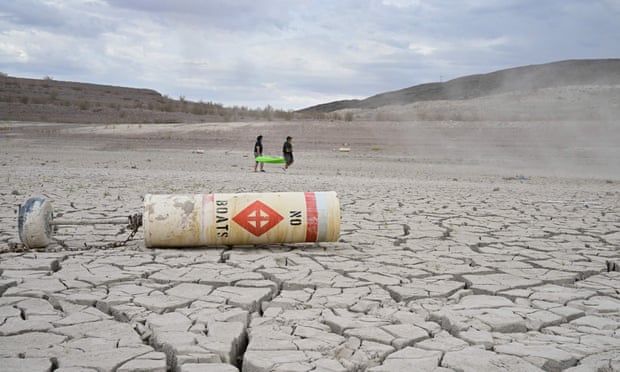Severe water outages were announced on Tuesday for western states hit by a severe "mega-drought". This has caused water levels in his two largest reservoirs in the country to drop to record lows.
The US Department of the Interior has declared the first-ever Tier 2 shortage on the Colorado River. This means Arizona, Nevada and Mexico will have to further reduce their water usage starting January 1st next year.
Arizona will face the biggest cut: 592,000 acre feet, or 21 percent of the state's current river use, officials said. Restrictions to other states, including California, may follow.
The crisis has caused water levels in Lake Mead, the largest reservoir in the United States, to drop to just a quarter of its 80-year low of 28.9 m acres. decreased to -Foot capacity threatens the viability of important river basins.
It also led to potential disruptions to water supplies and hydropower, forcing the federal government to take such drastic action.

Meanwhile, 24-meter-acre-foot Lake Powell has endured a similar disaster,the Guardian says. Reported in July
the country's first Tier 2 deficit was declared with the Home Office's forecast that Lake Mead's water level would fall below 1,050 feet above sea level on 1 January.
Lake Powell has a projected water surface elevation of 3,522 feet, just 32 feet from the minimum required for hydroelectric power generation.
"Every sector in every state has a responsibility to ensure that water is used with maximum efficiency," said Tanya Trujillo, deputy secretary for water and science at the Home Office, in a statement. Stated. “To avoid a catastrophic collapse of the Colorado River system and a future of uncertainty and conflict, water use in the basin must be reduced.”
United States Reclamation Service (USBR) ) last year warned seven states—Arizona, California, Colorado, Nevada, New Mexico, Utah and Wyoming—to prepare for emergency cuts. In June, officials saidstates should consider ways to reduce water use by 15%next year or impose cuts.
This predicamentincreased tension between states with different priorities for receivingand negotiations failed to reach agreement.
There's a lot to overcome, a lot of animosity," Kyle Roerink, executive director of the Great Basin Water Network, told the Los Angeles Times.
The Authority now has to figure out what Rehabilitation Authority Commissioner Camille Touton can take after the mid-August deadline to reduce water use by 25% in seven states on the Colorado River. Possible next step.
Some experts say further cuts are inevitable and could affect states further along the basin, including California.
"The system is approaching a tipping point and without action we will not be able to protect the system and the millions of Americans who depend on this resource," Touton said.
"Protecting the system means protecting the people of the American West."
Dire hydrological projections combined with curtailment deadlines are pushing western states to face unprecedented challenges and difficult decisions about how to plan for a drier future.
I see it as nothing more than The USBR is "very focused on getting this through to next year," but the cuts will likely need to be in place for much longer, said Kevin Wheeler, a hydrologist at the University of Oxford.
“What science is contributing is that it is clear that these reductions must be maintained until the drought is over. I know I have to," he said. He said.
Seven states and Mexico signed a 2019 agreement to help maintain reservoir levels. The amount of water allocated to states under that plan will depend on the water level of Lake Mead.
Arizona and Nevadaalso saw a first wave of forced cuts last year as lake levels dropped and the federal government declared water shortages for the first time in the region. Done. As Mexico in 2022.
Twenty-two years of drought have caused water levels in the reservoir to drop disastrously over the years.
Reduced spring thaw has also reduced the amount of water flowing from the Rocky Mountains as the Colorado River bends 1,450 miles (2,334 km) southwest and empties into the Gulf of California.
AP contributed to this report


